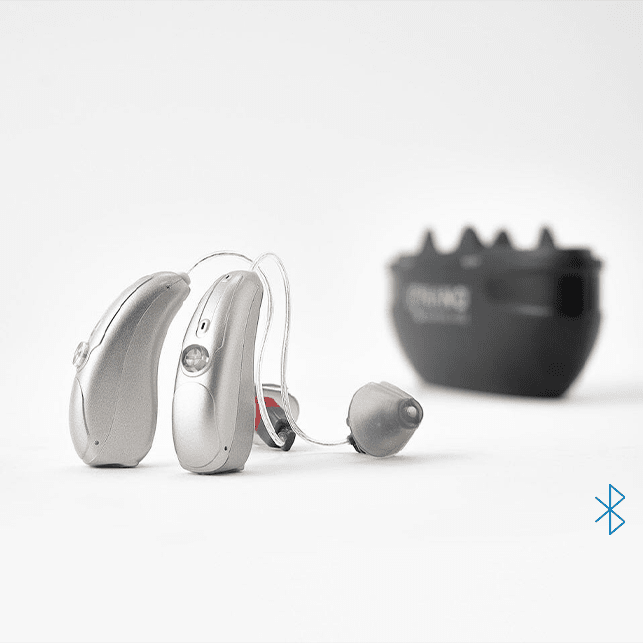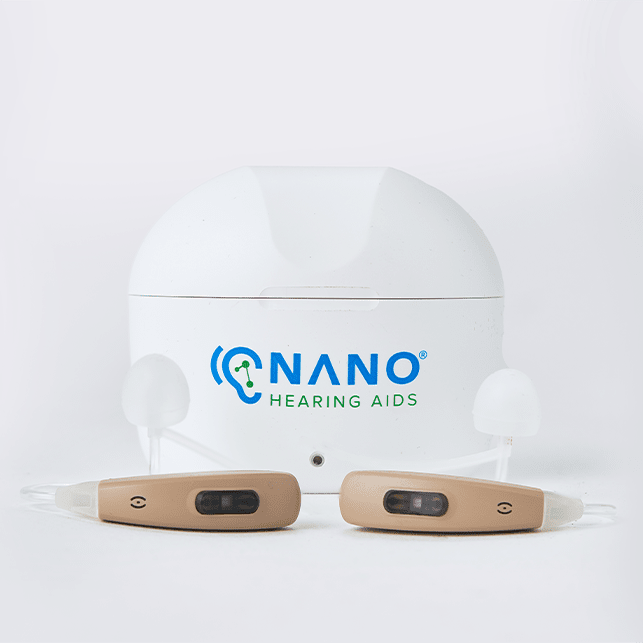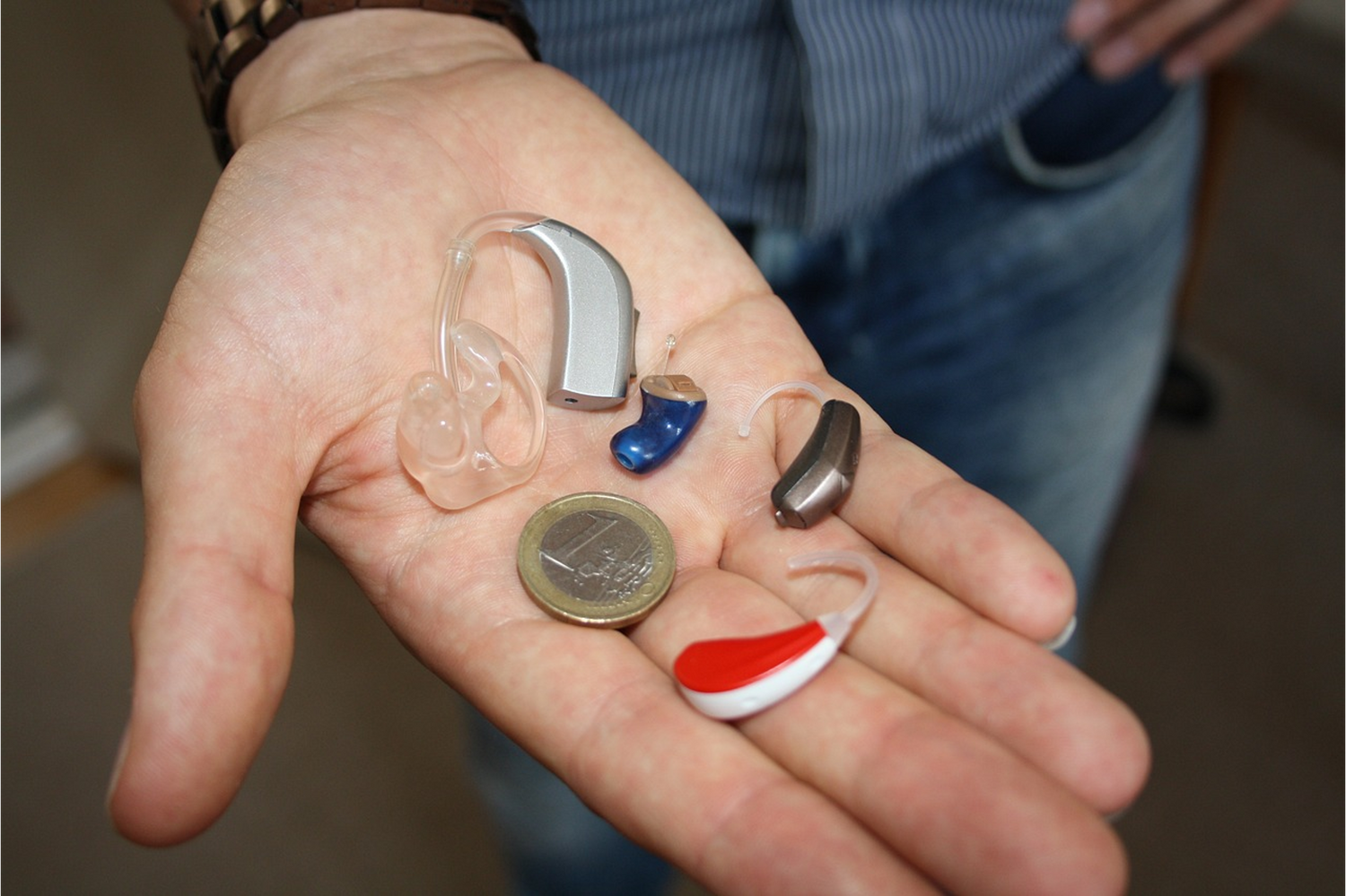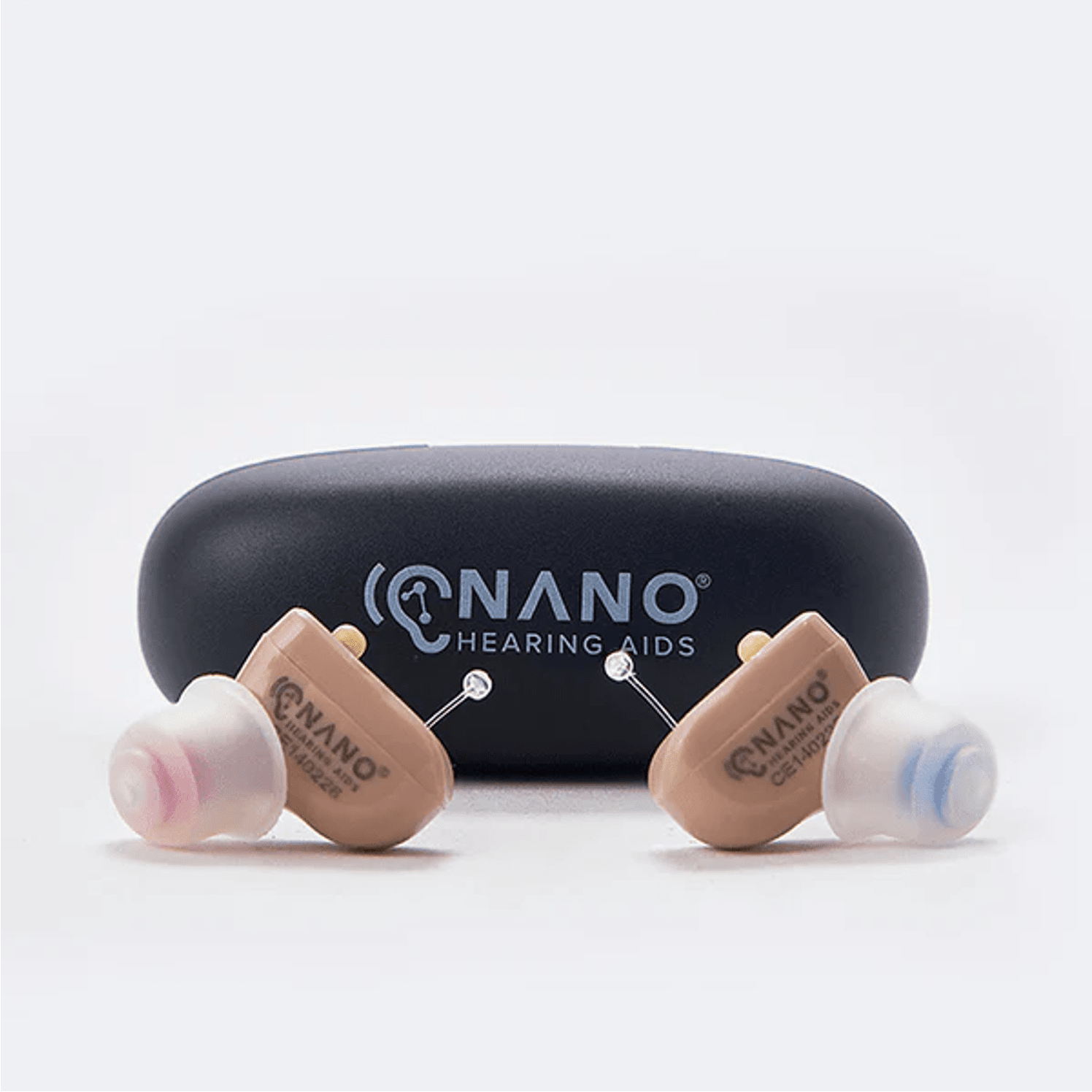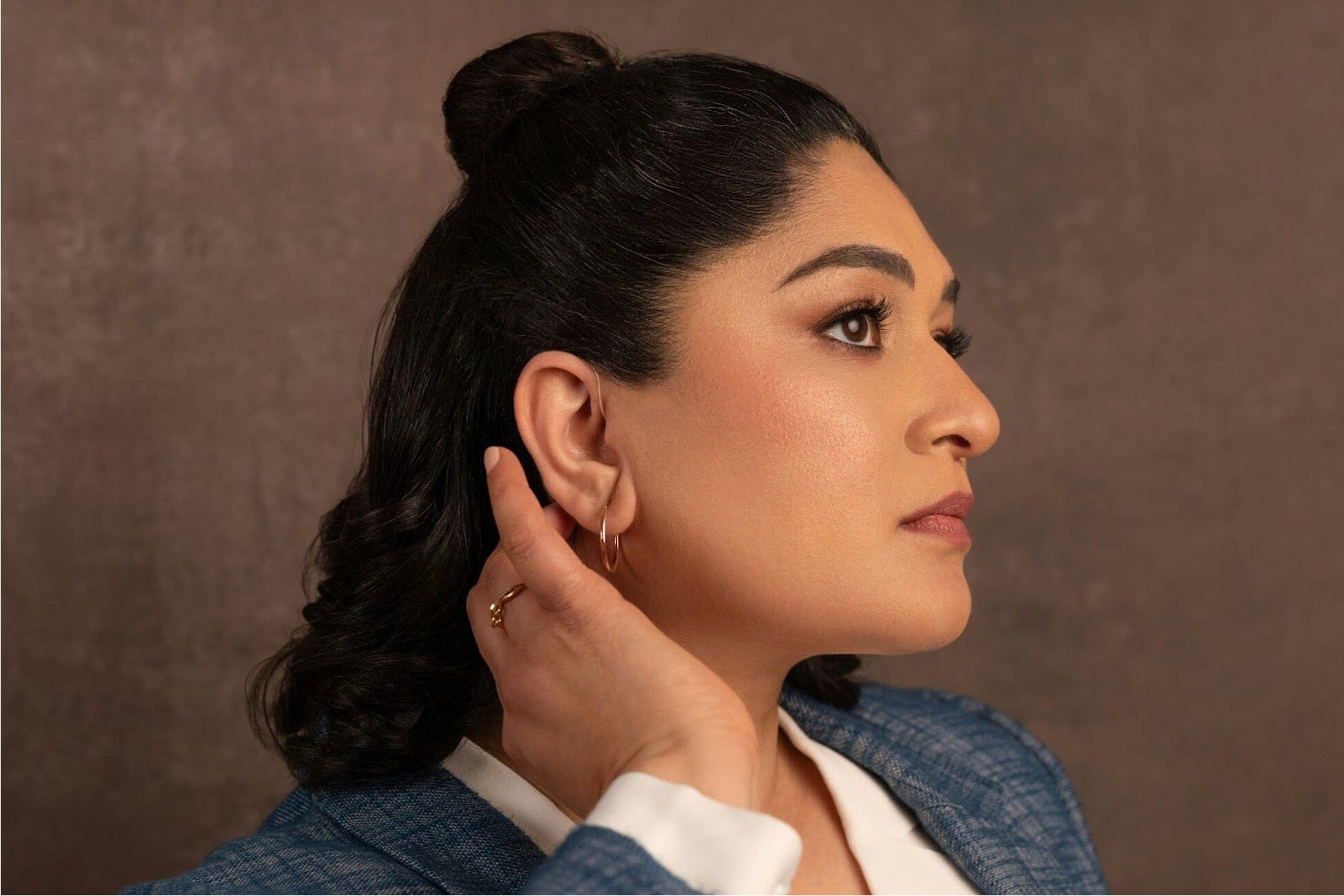Key Takeaways
- Rechargeable hearing aids eliminate the need for frequent battery purchases, offering significant long-term cost savings.
- They are environmentally friendly, reducing electronic waste compared to traditional hearing aids.
- These hearing aids offer the convenience of overnight charging, so they're always ready when you need them.
- The higher initial cost is offset by long-term savings and the added convenience of not needing disposable batteries.
- Nano First Ear Plus ITE offers up to 38 hours of listening time, with its portable charging case providing up to 3 full charges, making it a reliable and convenient choice for those considering rechargeable hearing aids and needing high autonomy while on the go.
Why Choose Rechargeable Hearing Aids?
Rechargeable hearing aids are ideal for individuals who rely on their hearing aids for extended periods and want to avoid the hassle of frequent battery replacements.
However, like any technology, rechargeable hearing aids come with their own set of challenges. The initial cost can be higher, and the need for regular charging may not suit everyone's lifestyle. Additionally, over time, the rechargeable batteries will need to be replaced, which can be an added expense.
NANO Hearing Aids are FDA-registered, Class I devices. Our OTC hearing aids are designed for individuals over 18 years of age with perceived mild to moderate hearing impairment. With prices starting at just $297, they offer a viable solution for those looking to improve their hearing without breaking the bank.
How Rechargeable Hearing Aids Work
Rechargeable hearing aids use built-in lithium-ion or silver-zinc batteries that provide consistent power throughout the day. Lithium-ion batteries are most common and can last up to 24 hours on a single charge. These batteries are designed to hold a charge for extended periods and can be recharged hundreds of times before they need to be replaced.
The batteries are charged by placing the hearing aids in a charging station overnight, making it easy for users to maintain a full charge daily. Over time, as the battery ages, its capacity may diminish slightly, but it typically lasts 3 to 5 years before needing replacement by a professional.
Advantages of Rechargeable Hearing Aids
Environmental Impact
Rechargeable hearing aids significantly reduce electronic waste by minimizing the need for disposable batteries. Built-in batteries can be recharged hundreds of times, cutting down the number of batteries ending up in landfills. Choosing these devices contributes to a cleaner, greener planet.
Cost-Effective Over Time
While the initial cost of rechargeable hearing aids may be higher, the long-term savings are substantial. You don’t need frequent battery replacements (though you may need to replace the battery after a while, as we’ll see later) - so there are lower overall maintenance costs.
Ease of Use
Rechargeable hearing aids provide consistent sound quality throughout the day, avoiding the potential performance dips that can occur with traditional models as battery power diminishes. This consistency enhances daily life, ensuring reliable performance without the need to worry about battery degradation during use. Additionally, rechargeable models eliminate the hassle of carrying spare batteries or needing to find replacements on the go, offering greater convenience and peace of mind.
Enhanced Features
- Longer Battery Life Per Charge: Many rechargeable hearing aids can last an entire day on a single charge, offering uninterrupted use from morning to night. This is especially beneficial for active individuals.
- Compatibility with Modern Devices: These hearing aids often feature Bluetooth connectivity, allowing for seamless integration with smartphones and tablets. This enables users to stream audio directly from their devices for phone calls, music, and videos.
Challenges of Rechargeable Hearing Aids
Battery Lifespan Limits
- Need for Replacement Every Few Years: Rechargeable hearing aid batteries typically need replacement every few years, which can add both expense and inconvenience. Since these batteries are built into the device and cannot be replaced by the user, you'll need to take your hearing aids to a professional for service. This process could leave you without your hearing aids for a period, so it's important to factor in both the cost and the potential downtime when considering rechargeable models.
- Potential Performance Degradation: As batteries age, their performance may degrade, resulting in shorter battery life per charge and reduced overall performance. Follow the manufacturer’s guidelines for charging and maintenance to extend the battery’s lifespan and maintain optimal performance.
Higher Initial Costs
- Upfront Investment: Rechargeable hearing aids come with a higher initial cost. Weigh this cost against long-term savings on disposable batteries and the added convenience of rechargeable devices to determine if they’re a worthwhile investment.
- Cost Compared to Disposable Models: While the initial cost may be higher, long-term savings on disposable batteries can offset this expense. The convenience and environmental benefits of rechargeable hearing aids can make them more appealing.
Dependency on Charging
- Always Require Access to Power: Regular charging is necessary for rechargeable hearing aids. This dependency can be challenging, especially if you travel frequently or have limited access to power. Plan to ensure a reliable way to charge your hearing aids, whether at home or on the go. But the good news is that some brands like Nano have portable charging cases that allow you to charge your hearing aids on the go.
- Risk of Dead Batteries in Emergencies: In emergencies, dead batteries can be a concern. If you forget to charge your hearing aids or experience a power outage, you may find yourself without a functioning device. Consider a backup charging solution, such as a portable power bank, to keep your hearing aids charged in unexpected situations.
Making the Right Choice for Your Hearing Health
Reliable charging options with Nano’s compact and portable hearing aid case.
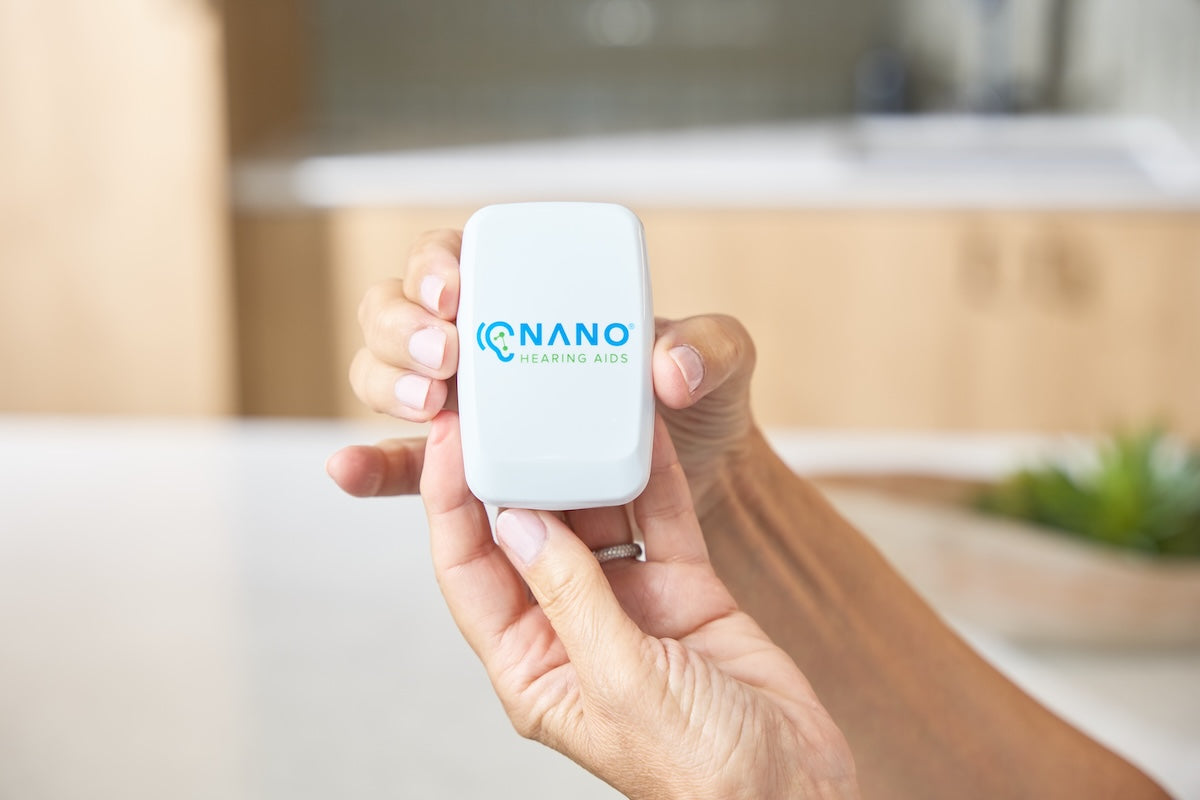
Assessing Your Needs
- How Often You Use Your Hearing Aids: Consider how often you use your hearing aids and for how long each day. If you rely on your hearing aids for extended periods, rechargeable models with longer battery life may be a better fit. If you use them occasionally, traditional models with disposable batteries might be more convenient and cost-effective.
- Your Access to Charging Facilities: Consider your ability to consistently charge your hearing aids overnight. If you travel frequently or have limited access to power, traditional hearing aids with disposable batteries might be more practical. On the other hand, if you have reliable access to power and can maintain a regular charging routine, rechargeable hearing aids offer significant convenience and benefits.
Consulting a Professional
- Getting Expert Advice: A hearing professional can assess your hearing needs and recommend the most suitable hearing aids. They provide insights into the pros and cons of rechargeable and traditional models, helping you make the best choice.
- Exploring Available Models: Review the available models and features of both rechargeable and traditional hearing aids. Understanding your options ensures you choose the best hearing aids for your unique needs.
Why Choose Nano OTC Hearing Aids
Maximize your hearing experience with the Nano First Ear Plus ITE—reliable and rechargeable for everyday convenience.
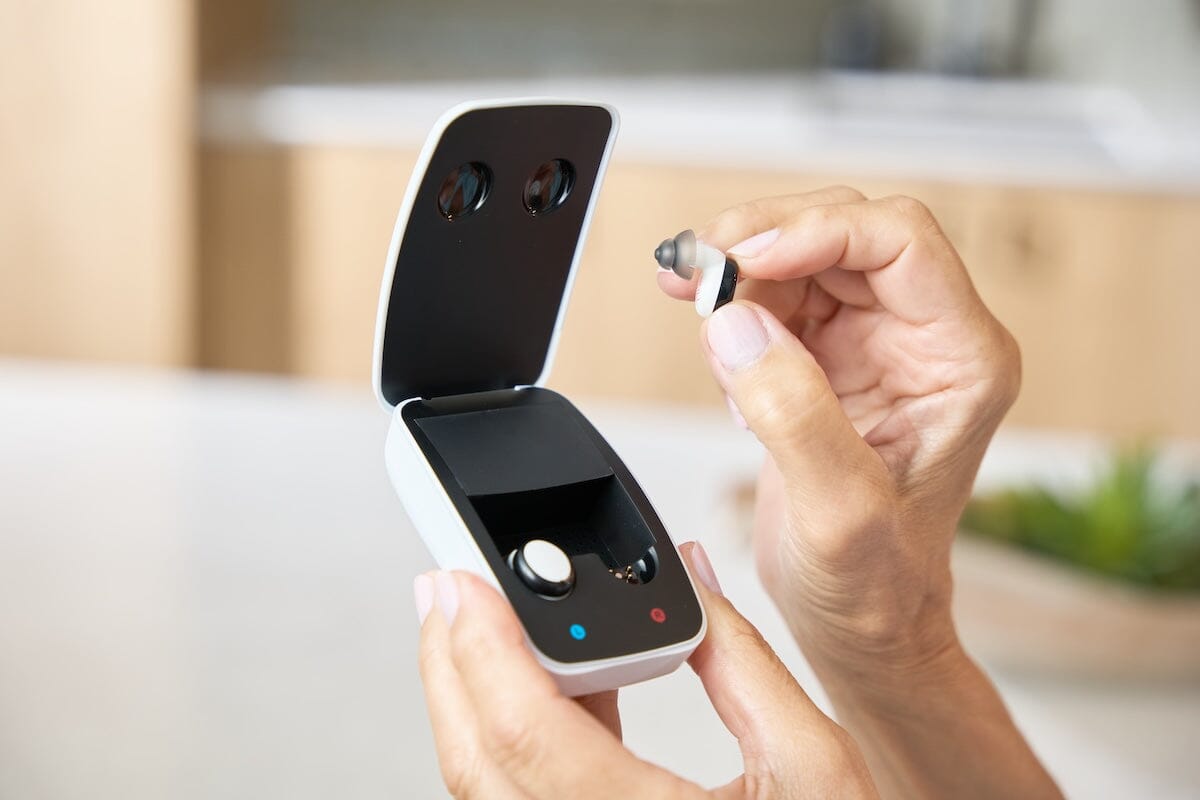
At Nano, we offer OTC hearing aids that stand out due to their advanced features, affordability, and user-friendly design.
With over 7 years of experience, our FDA-registered devices meet high standards of safety and efficacy. Nano hearing aids include noise reduction technology, customizable settings, and wireless connectivity, providing a personalized and seamless hearing experience.
A prime example is the Nano First Ear Plus ITE. This rechargeable hearing aid comes with a compact magnetic charging case, offering up to 38 hours of use per charge. It also features advanced noise reduction and feedback management, ensuring clear and consistent sound throughout the day.
These features make Nano hearing aids an excellent choice for anyone seeking to enhance their hearing with modern, convenient technology.
Frequently Asked Questions
How long do rechargeable hearing aid batteries last per charge?
Rechargeable hearing aid batteries typically last an entire day on a single charge, providing 18-24 hours of use depending on your usage and the features you’re utilizing. This ensures you can enjoy uninterrupted hearing from morning till night.
Do rechargeable hearing aids cost more initially?
Yes, rechargeable hearing aids often come with a higher initial cost compared to traditional models with disposable batteries. However, the long-term savings on batteries can help offset this expense, making them a cost-effective choice over time.
Are rechargeable hearing aids more eco-friendly?
Rechargeable hearing aids are more environmentally friendly as they reduce the need for disposable batteries - which cuts down on electronic waste and contributes to a more sustainable future by minimizing the environmental impact.
Can I use my rechargeable hearing aids while they’re charging?
Most rechargeable hearing aids cannot be used while they are charging, making it important to plan your charging schedule carefully. Ensure your hearing aids are fully charged ahead of time to avoid interruptions and guarantee they are ready for use when you need them.
How often do I need to replace the rechargeable battery?
Rechargeable hearing aid batteries typically need to be replaced every few years, depending on usage, care, and the specific model of the hearing aid. These batteries are usually built into the device and are not user-accessible, meaning they require professional servicing when they need to be replaced. Following the manufacturer's guidelines for charging and maintenance, such as avoiding overcharging and storing in optimal conditions, can help extend the battery's lifespan.
Why Should I Choose Nano Hearing Aids?
Choosing Nano OTC Hearing Aids means opting for reliable, user-friendly devices that cater to your hearing needs with modern technology.
The Nano First Ear Plus ITE model offers up to 38 hours of use per charge with its compact magnetic charging case, ensuring long-lasting performance. To prevent any interruptions, it's wise to set a reminder to charge them overnight and consider having a backup charging solution, such as a portable power bank, for emergencies.

